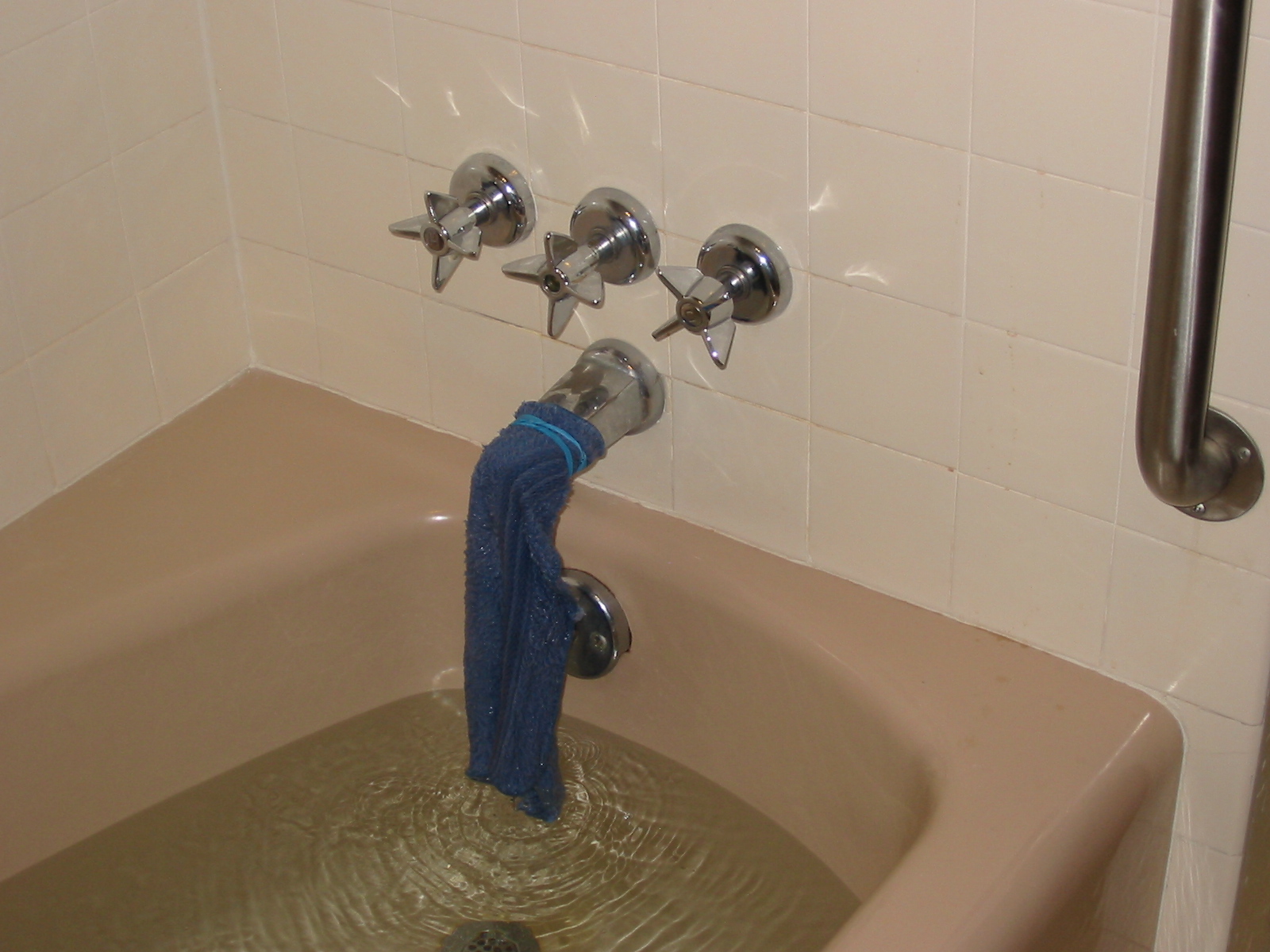Bathtub Muffler
Reducing Bath Fill Noise
Like David D. Friedman, I take long baths and read. I need quiet time before bed in order to sleep, and a long hot bath with a non-threatening book works well for this (calculus is the best soporific!). Yes, it costs water and energy, but I live in Oregon, with more water and energy than most places.
But the noise of the occasional hot water refill interferes with my wife's sleep, who goes to bed before I do (reread "quiet time" sentence above).
A trick that reduces the noise:
Wrap the end of the faucet spout with a washcloth, so that a "pipe" of washcloth hangs down into the water. Secure with rubber bands.
The washcloth slows fill rate a bit, but it also eliminates most of the noise. It does this five ways:
- 1) The washcloth slows down the falling water, which longer hammers the tubwater surface.
- 2) The point of impact is muffled.
- 3) The cavitation and noise of the falling water goes away.
- 4) The resonance of the faucet spout itself is dampened.
- 5) This will reduce water hammer in older houses with poorly-secured pipes.
This also allows turning off the faucet handles with toes without risk of feet veering into a scalding hot stream.
Yes, this uses up washcloths (you want to change them or they will mildew). But if yesterday's scrub washcloth becomes today's sound reduction washcloth, then tomorrow's hang-out-to-dry before laundering washcloth, you've merely added one "wet day" on the way to the laundry hamper. I usually dry them for two days so they are bone dry before they go in the hamper, and have a repurposed towel rack under a cabinet for the purpose.
|
Faucet running full blast, quietly. 1600x1200 picture |
A note about David Friedman's refill valve problem
A tap off the main faucet to a valve at the head end of the tub feeding a meter of garden soaker hose might be even quieter, and solve the "controls in the wrong place" problem (there could be mildew problems, though). I bet DDF could figure out a way to keep the hose clean, and pay a plumber $500 to add the extra piping and valves. The extra pipe should run in the cavity between the wall and tub, with heat-reflecting foil on the wall, so the cooling pipe heats the tub anyway. For extra bonus points, put an inline heater on this pipe, and for safety add a foot of electrically-insulating plastic pipe between the heated pipe and the electrically-grounded new valve. Since the new valve will get used a lot, hunt for a design that doesn't need washers changed every 6 months.
Alternate to this alternative, a foot pedal valve from the hot incoming pipe to a soaker hose spout at the faucet end? They make such valves for surgeon sinks and emergency showers.
